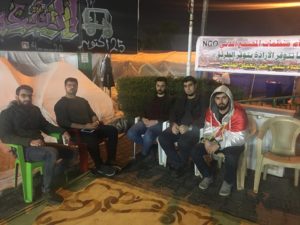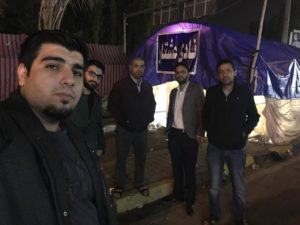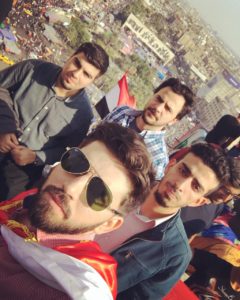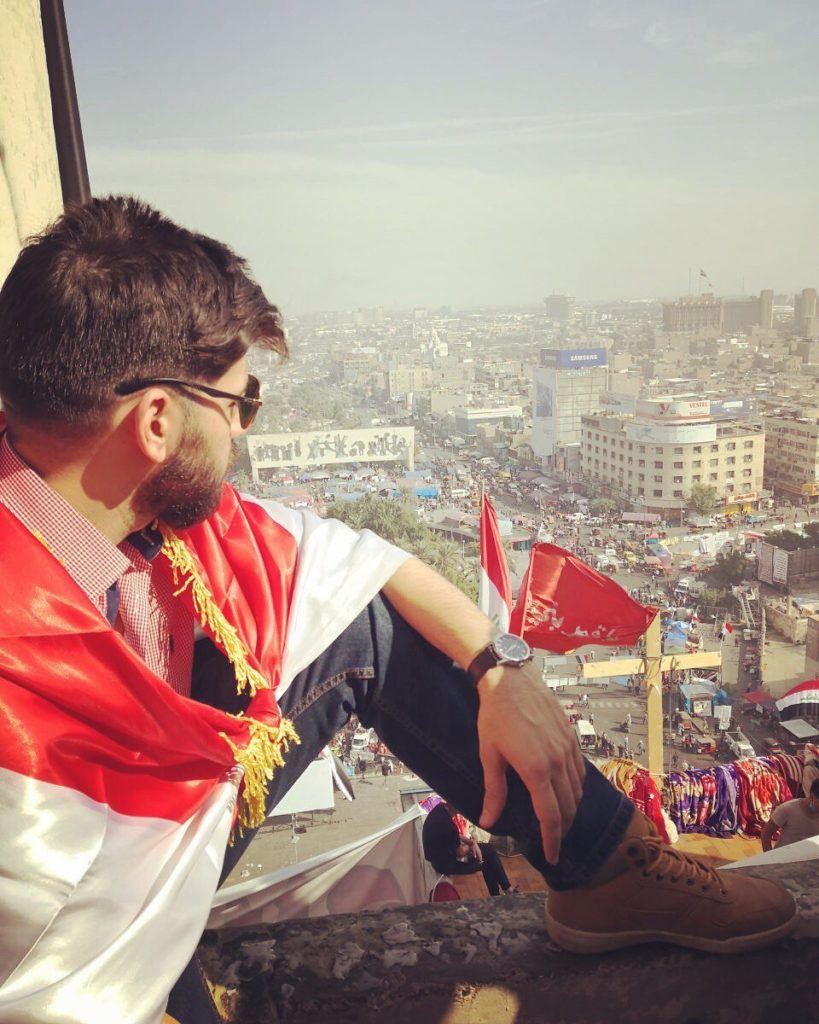1/10/2019
After the start of the October protests in the governorates of central and southern Iraq, the staff of the Ishtar Center, including young men and women, academics and clerics, accompanied the protests and worked to support them politically and popularly. They strengthened the center’s role in supplying the protests with ideas and health advice, and they worked on evaluating the protest movement and criticizing the behaviors that harm it. This role was through:
- Field participation in the protests of the Najaf Demonstrations Square and Tahrir Square in Baghdad and the opening of direct and indirect lines of communication with many protesters, activists and protest leaders.
- Participating in holding mini-discussions that bring together young people with academics sometimes and young people with clerics at other times, to crystallize visions and attract the largest possible number of social groups to support the protest movement.
- Carrying out campaigns of pressure, advocacy and support for the protest movement and its demands, and opposition to the repression, killing and kidnapping operations that a large number of demonstrators were subjected to, through social networking sites and local and international media (television interviews) and through private meetings with a number of political leaders with moderate, non-extremist orientations.
- Communicate with Iraqi media professionals inside and outside Iraq to convey an image of the problems and obstacles facing the protest movements.
- Adoption of the first initiative in the Najaf governorate in the first month of the year 2020 to establish a political party to represent the protest movement, where a number of activists from the leaders of the demonstrations, in addition to a number of academics and a number of women figures, gathered at the house of Dr. Muhammad Alawia, head of the Ishtar Center, for the purpose of discussing the mechanisms of forming an organized political front, which is considered the political wing of the protest movement and establishes a political alternative that has a vision, a project, and youth organizations on the ground. This session was the start at the Najaf level.


This session was followed by several meetings with many activists, academics and women figures, and this activity was expanded to communicate with the actors in the rest of the provinces, and when the National House project emerged from the youth of Nasiriyah, many meetings were held between the youth of Nasiriyah and the youth of Najaf, and then the youth of the various central governorates of Iraq The southern, northern and western regions led to the establishment of the National House Party, the most important and most acceptable party in the protest circles, and the Ishtar Center for Supporting Democracy remained an independent center supporting this young party and supporting it in the spaces where the center works.


